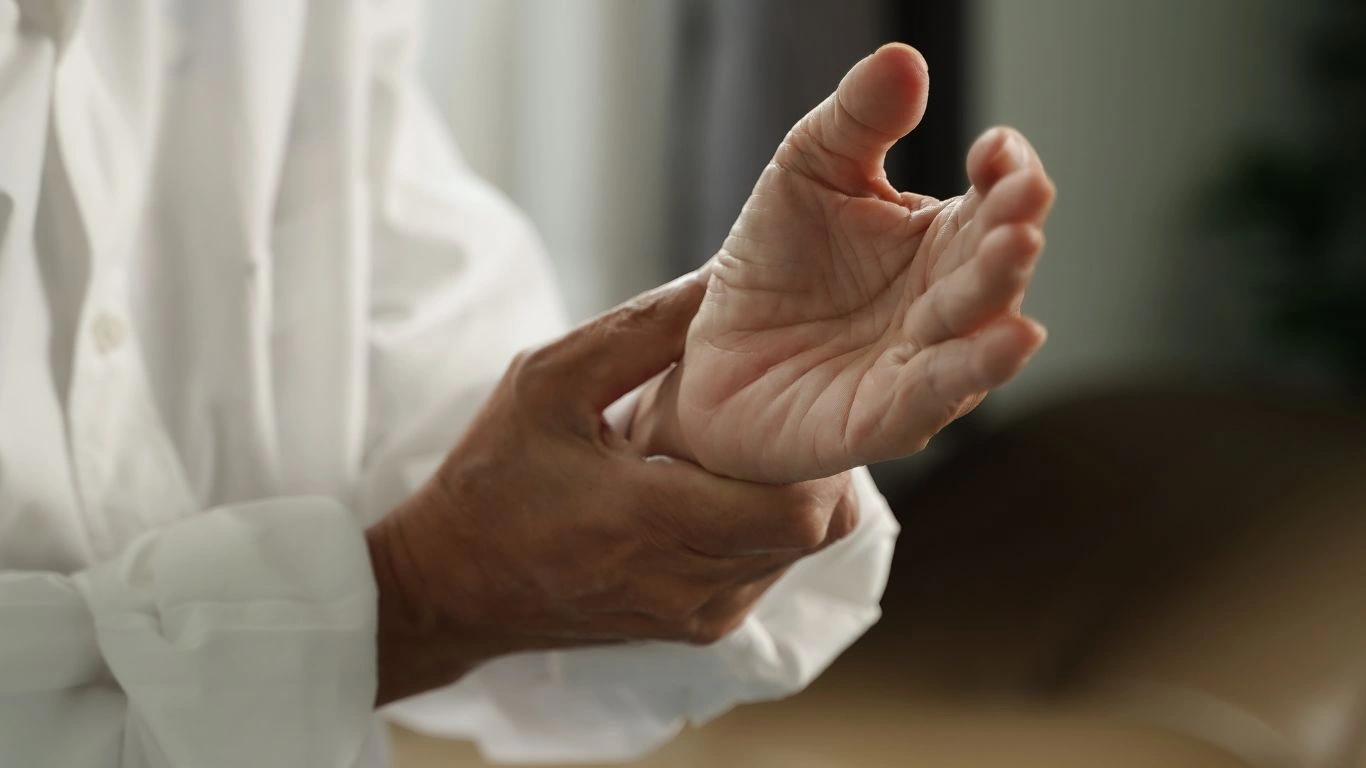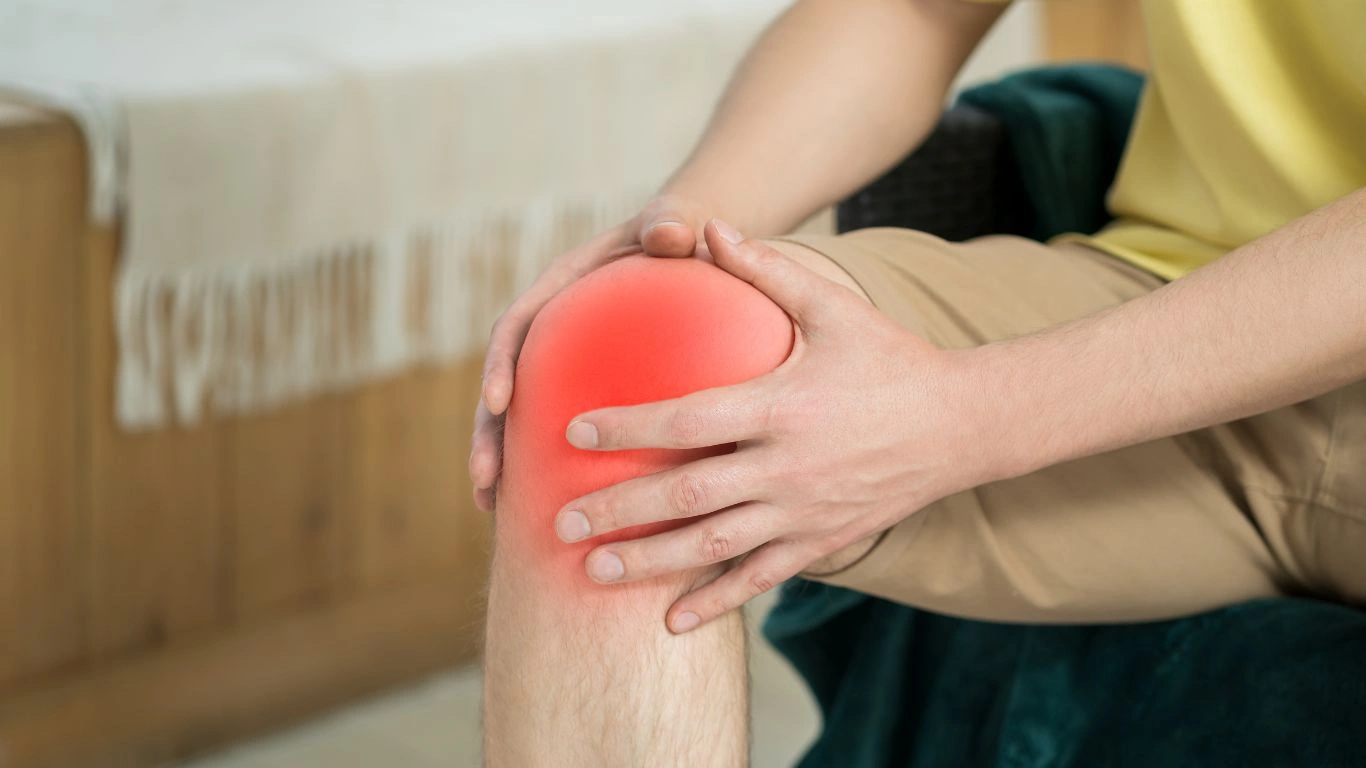RA and Balance Problems Explained: Causes and Solutions
Living with rheumatoid arthritis (RA) often means more than just managing joint pain and stiffness. One of the less talked about, yet frustrating symptoms that many patients experience is balance problems. As a rheumatology nurse practitioner, I’ve seen firsthand how RA and balance problems explained can unlock a deeper understanding of what’s happening inside the body—and why these balance issues aren’t just random or unrelated. If you or someone you know has RA and has started noticing unsteadiness or frequent wobbling, this article will shed some light on what’s really going on and why it matters.
Understanding How Rheumatoid Arthritis Affects Balance

From my clinical experience, patients often come in worried about dizziness or feeling off-balance, and it’s natural to wonder if RA can be the cause. The truth is, RA affects the body in ways that go beyond swollen joints. It’s a chronic inflammatory condition that impacts muscles, nerves, and even the brain’s coordination centers indirectly.
Here’s the thing: balance is a complex process involving multiple systems working together—the inner ear, muscles, joints, eyes, and the nervous system. When RA triggers inflammation in joints, especially in the feet, ankles, and knees, it disrupts your body’s ability to provide reliable sensory input to your brain. This makes your footing less stable. Plus, pain and swelling limit movement, which can cause muscles to weaken or tighten, further impairing balance.
The Role of Joint Inflammation and Pain
You might not immediately connect joint inflammation with balance, but it plays a huge role. When joints hurt or are swollen, you naturally shift your weight differently to avoid pain. This altered posture isn’t just uncomfortable—it can throw off your center of gravity. Over time, compensating for painful joints causes muscle imbalances and reduced proprioception (that’s your body’s ability to sense where it is in space), which leads to a higher risk of tripping or falling.
How RA-Related Fatigue Impacts Stability
Another aspect I often discuss with patients is fatigue. RA isn’t just joint pain; it brings along a heavy, persistent tiredness that affects muscle endurance and focus. When you’re fatigued, your muscles don’t respond as quickly, and your reaction times slow down, which is crucial when you need to catch yourself or steady your balance. This makes everyday tasks, like walking on uneven ground or climbing stairs, more challenging and risky.
Neurological Factors Contributing to Balance Problems in RA

One part that surprises many is how RA can indirectly affect the nervous system. Although RA is primarily known for joint inflammation, systemic inflammation can impact nerve health. Peripheral neuropathy, which is damage or dysfunction of the nerves outside the brain and spinal cord, is more common in people with RA than many realize. When nerves in your feet or legs are affected, sensations like touch, pressure, or position sense can become dulled or distorted—making it harder to maintain stable footing.
On top of that, some medications used to control RA symptoms may have side effects that affect balance or coordination. It’s always important to discuss any new or worsening balance issues with your healthcare provider to rule out medication-related causes or other neurological conditions.
Inflammation’s Ripple Effect on the Brain
While still a developing area of research, emerging evidence shows that systemic inflammation in RA might influence brain function, including areas responsible for motor control and balance. In my practice, I’ve seen patients report “brain fog” and slower reaction times, which may be linked to this inflammatory process. These subtle changes can further reduce your ability to maintain steady balance.
Common Symptoms and Signs of Balance Problems in RA

When patients first mention balance issues, they often describe feeling unsteady, like their legs don’t quite support them the way they used to. From my experience, these symptoms can vary widely but usually include:
- Frequent stumbling or tripping over uneven surfaces or even flat ground
- A sensation of dizziness or lightheadedness, especially when standing up quickly
- Difficulty maintaining posture while standing or walking
- Feeling like you might fall, especially in crowded or cluttered spaces
- Increased reliance on walls, furniture, or assistive devices to stay steady
These symptoms aren’t just inconvenient—they can significantly impact daily life and confidence. I’ve seen patients avoid social activities or stop walking outdoors because of fear of falling, which unfortunately can lead to isolation and reduced physical fitness, creating a vicious cycle.
Why Early Recognition Matters
One important thing I always emphasize is that balance problems shouldn’t be shrugged off as “just part of getting older” or an unavoidable consequence of RA. Early recognition means we can intervene before falls happen, which is crucial because falls can cause serious injuries, hospitalizations, and setbacks in managing RA overall.
Practical Strategies to Manage RA-Related Balance Issues

The good news? There are plenty of ways to improve your balance and reduce your risk of falls—even with RA. Over the years, I’ve helped many patients adopt strategies that make a noticeable difference. Here’s a breakdown of some practical steps you can start using today:
- Work with a physical therapist. These specialists design personalized exercise programs focusing on strengthening muscles, improving joint flexibility, and retraining your balance. They can also teach you techniques for safer movement and provide assistive devices if needed.
- Incorporate balance exercises into your routine. Simple activities like standing on one foot, heel-to-toe walking, or Tai Chi can enhance proprioception and stability. Even seated exercises that improve core strength help.
- Manage pain and inflammation effectively. Keeping your RA under control with medications and lifestyle changes reduces joint swelling and stiffness, which directly helps your balance.
- Use supportive footwear. Shoes with good arch support, non-slip soles, and cushioning can make walking safer and more comfortable.
- Make your home safer. Remove tripping hazards like loose rugs, keep pathways clear, and use grab bars or railings in critical areas like bathrooms and stairways.
In my practice, I often remind patients that even small changes can build confidence over time. Many hesitate at first, fearing they’ll lose independence, but taking these steps can actually help maintain freedom by reducing fall risk.
Nutrition and Lifestyle Tips That Support Balance
Balance isn’t just about muscles and joints—it’s also about overall wellness. I always encourage my patients to look at their diet and daily habits, because what you put in your body fuels your strength and endurance.
- Stay hydrated. Dehydration can cause dizziness and weakness, so drinking enough water is vital.
- Eat a balanced diet rich in anti-inflammatory foods. Think colorful fruits and veggies, omega-3 rich fish, whole grains, and nuts. These foods can help reduce systemic inflammation that aggravates RA symptoms.
- Limit alcohol and caffeine. Both can affect your balance by causing dehydration or impacting your nervous system.
- Get adequate sleep. Poor sleep worsens fatigue and cognitive function, which impacts coordination and focus.
When to Seek Professional Help for Balance Issues

Not every balance wobble needs urgent care, but there are certain signs that tell me it’s time to step in with a thorough evaluation:
- Repeated falls or near-falls within a short time
- Sudden onset of severe dizziness or vertigo
- New or worsening numbness, tingling, or weakness in the legs
- Difficulty standing up or walking without assistance
- Confusion or cognitive changes alongside balance issues
If you notice any of these symptoms, don’t hesitate to reach out to your healthcare provider. We can perform detailed assessments including neurological exams, gait analysis, and sometimes imaging or blood tests to uncover the root causes. From there, a tailored treatment plan can be created.
In my years as a rheumatology nurse practitioner, I’ve seen how addressing balance problems early on can drastically improve quality of life. Remember, RA affects each person differently, and your experience is unique—but you’re not alone, and help is available.
Long-Term Management and Support for RA and Balance Problems

Managing RA and balance problems is really about embracing a long-term, multifaceted approach. Over my years working closely with patients, I’ve learned that no single solution fits everyone. It’s about combining medical treatment, lifestyle changes, and consistent support. When you think about RA, it’s like managing a puzzle where every piece affects the others.
Medications remain the cornerstone in controlling the inflammation that fuels joint damage and symptoms, including balance difficulties. Disease-modifying antirheumatic drugs (DMARDs) and biologics can drastically slow the disease progression and help reduce joint swelling and pain. In my experience, patients who maintain steady control of their RA symptoms tend to see better outcomes with balance and mobility.
But medicine is just one piece. Working alongside your healthcare team, including rheumatologists, physical therapists, occupational therapists, and sometimes neurologists, can provide a comprehensive strategy tailored to your unique needs. Physical therapy is especially important because it focuses on strengthening weak muscles, improving joint function, and retraining your balance through targeted exercises. Occupational therapists can help modify your daily environment and routines to reduce fall risks and increase safety.
Building a Support System
One thing I always stress is that dealing with RA and balance challenges isn’t something you should face alone. Support groups, whether in person or online, offer a space to share experiences, tips, and encouragement. Sometimes just knowing others understand what you’re going through can be a huge relief. Personally, I’ve seen patients thrive when they connect with peers who motivate them to stay active and keep up with their treatment plans.
The Role of Technology and Assistive Devices
Modern technology has brought exciting tools that can support those dealing with balance issues. From canes and walkers designed for stability to wearable sensors that monitor gait and provide real-time feedback, there are options that help maintain independence safely. I often recommend discussing these devices with your healthcare team—they can guide you to what fits your lifestyle best.
Practical Tips to Stay Safe and Confident Daily

Alongside formal treatment and therapy, simple everyday habits can make a big difference. From my years on the floor, here are some practical tips I often share with patients to help them feel steadier and safer:
- Take your time when changing positions. Moving slowly from sitting to standing can reduce dizziness.
- Use handrails whenever possible. Whether on stairs or in hallways, handrails add a reliable support point.
- Keep your living space well-lit and clutter-free. Shadows and obstacles increase the chance of tripping.
- Wear shoes with good grip and avoid walking barefoot. Slippery floors can be hazardous, especially when joints are unstable.
- Stay active but within your limits. Regular movement helps maintain strength and coordination but listen to your body to avoid overdoing it.
- Practice deep breathing and relaxation techniques. Stress and anxiety can worsen muscle tension and unsteadiness.
No one wants to feel limited by RA or afraid of falling. In my clinical view, fostering confidence through education and proactive steps is just as important as medical treatment. When you build awareness of your body’s signals and take small, consistent actions, you regain control over your balance and life.
Resources and Where to Learn More
If you’re looking for trusted information and additional support about rheumatoid arthritis and related balance issues, here are some valuable organizations and sites I recommend:
- https://www.rheumatology.org/ — The American College of Rheumatology offers excellent patient resources on RA management.
- https://www.arthritis.org/ — Provides accessible guides on arthritis types, treatment, and living well with arthritis.
- https://www.niams.nih.gov/ — The National Institute of Arthritis and Musculoskeletal and Skin Diseases, a great source for research and patient education.
- https://www.cdc.gov/arthritis/ — Offers helpful statistics, prevention tips, and community programs.
Disclaimer
This article is intended for educational purposes only and does not replace professional medical advice, diagnosis, or treatment. If you experience balance problems, dizziness, or worsening symptoms, please consult your healthcare provider promptly. Your care team can provide personalized recommendations suited to your health status and needs.
Living with rheumatoid arthritis can be challenging, but understanding how it impacts balance—and taking active steps to address it—can significantly improve your quality of life. Remember, with the right knowledge, support, and tools, you can navigate these challenges with confidence.

Tarra Nugroho is a dedicated Nurse Practitioner with a strong foundation in family and preventive care. She brings both compassion and clinical expertise to her practice, focusing on patient-centered care and health education. As a contributor to Healthusias.com, Tarra translates medical knowledge into clear, empowering articles on topics like women’s health, chronic disease management, and lifestyle medicine. Her mission is simple: help people feel seen, heard, and informed—both in the clinic and through the content she creates. When she’s not caring for patients, Tarra enjoys weekend hikes, plant-based cooking, and curling up with a good health podcast.






